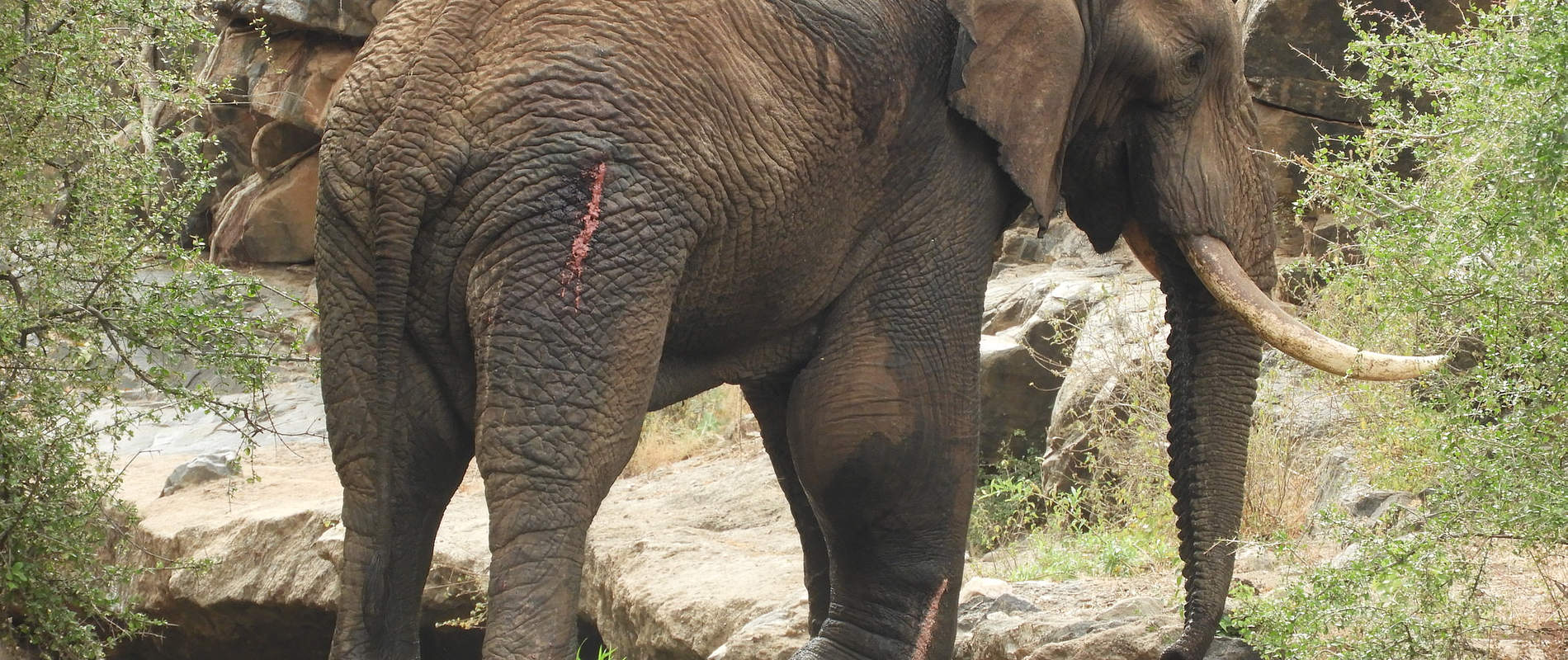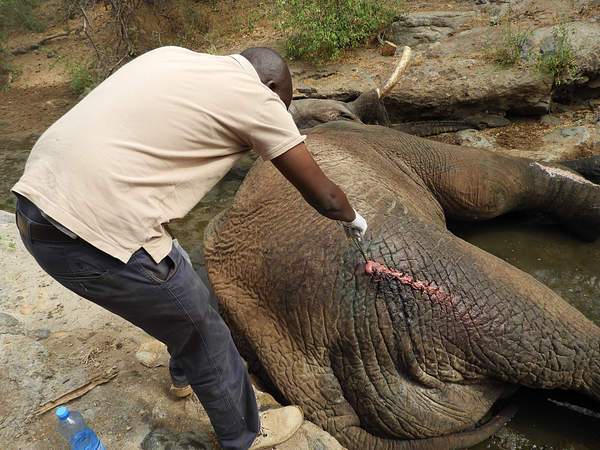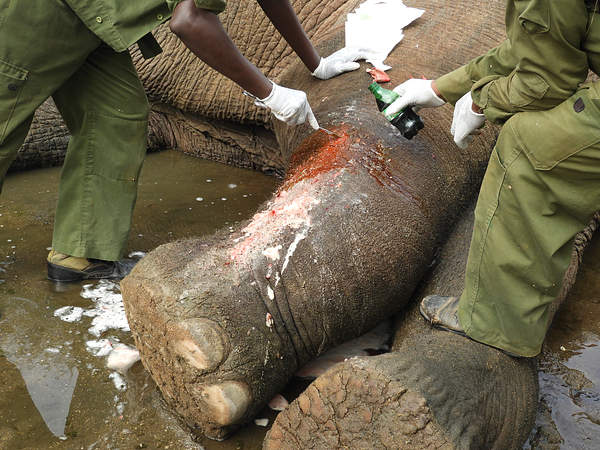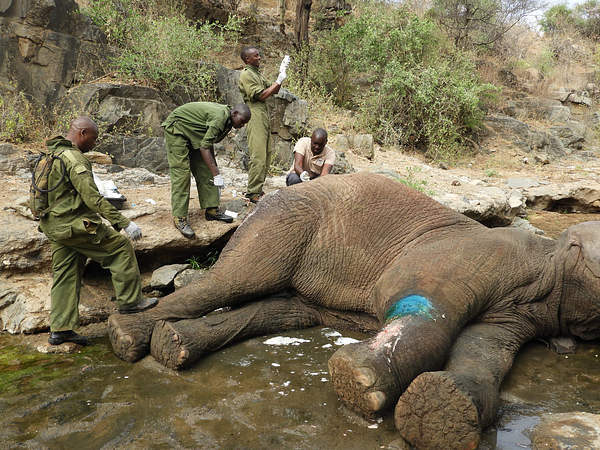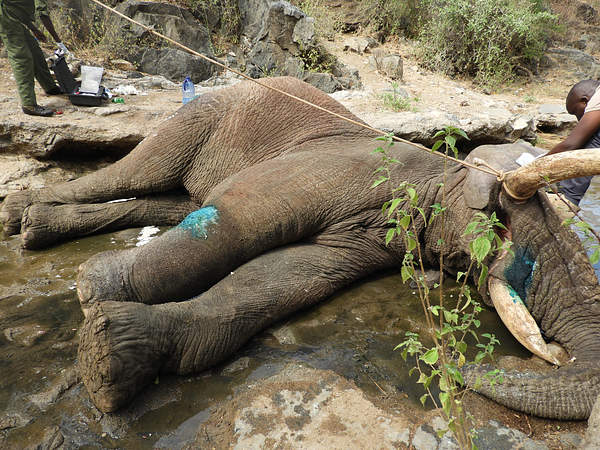During August, the Unit was on annual for three weeks and resumed duty thereafter. Report by: Bernard Rono Veterinary Officer Summary This report describes the activities of the Meru Veterinary Unit in Northern Kenya in August 2018
This report describes the activities of the Meru Veterinary Unit in Northern Kenya in August 2018. An attempt to capture, by darting, a lioness which strayed into a village in Igoji, Meru County was not successful. The warden was advised to set up cage traps to capture the problematic lioness which was praying on livestock and endangering the community. In Milgis, Samburu County we followed up on a case of a bull elephant with septic wounds which had been treated two weeks earlier.
CASE#1 BULL ELEPHANT TREATED FOR GUNSHOT WOUNDS
Date: 30 August 2018
Species: Elephant
Sex: male
Location: Milgis, northern Samburu
History: This was a follow up treatment on an injured bull elephant, which was treated two weeks earlier by the Laikipia Unit Veterinarian. Scouts from Milgis Trust who were monitoring the elephants wellbeing, reported that its health was deteriorating. It had septic wounds on its right fore leg and right hind leg with severe lameness and swelling of the front leg.

Immobilization, examination and treatment: The elephant was found in a lugga and darted by foot using Etorphine Hydrochloride 14mg in a 1.5cc dart. It was weak and showed little resistance when approached on foot. After six minutes it fell on left lateral recumbence. Examination revealed a septic penetrating wound into the right carpal joint and dorsally on the right gluteus.
Wounds were debrided using Hydrogen Peroxide and water. Iodine and green clay were then applied. Antibiotics, multivitamin and corticosteroid were also injected intramuscularly.
Reversal and Post-mortem: Anaesthetic drug was reversed by intravenous injection of Diprenophine hydrochloride 25 minutes after darting. Several unsuccessful attempts were made to get the elephant to standing position using ropes. The large bull remained recumbent and sadly succumbed to his injuries 18 hours after darting. A post mortem was conducted at the scene and revealed that the septic wounds were caused by gunshots with a fractured dorsal to the right carpal joint. Septicemia and osteomyelitis secondary to the gunshot injuries were the immediate cause of death.
Acknowledgment
Report by KWS Dr Bernard Rono. We would like thank the KWS management and the David Sheldrick Wildlife Trust who continue to support the unit.
